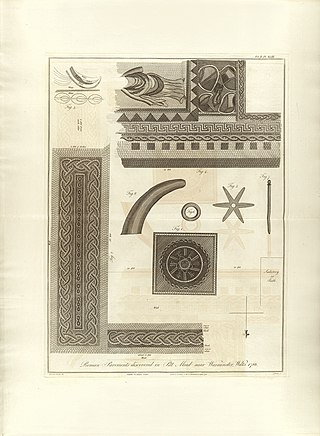Related Research Articles

Egyptology is the scientific study of ancient Egypt. The topics studied include ancient Egyptian history, language, literature, religion, architecture and art from the 5th millennium BC until the end of its native religious practices in the 4th century AD.

Zahi Abass Hawass is an Egyptian archaeologist, Egyptologist, and former Minister of Tourism and Antiquities, a position he served twice in. He has worked at archaeological sites in the Nile Delta, the Western Desert and the Upper Nile Valley.
Pseudoarchaeology consists of attempts to study, interpret, or teach about the subject-matter of archaeology while rejecting, ignoring, or misunderstanding the accepted data-gathering and analytical methods of the discipline. These pseudoscientific interpretations involve the use of artifacts, sites or materials to construct scientifically insubstantial theories to strengthen the pseudoarchaeologists' claims. Methods include exaggeration of evidence, dramatic or romanticized conclusions, use of fallacious arguments, and fabrication of evidence.
Archaeology is the study of human activity in the past, primarily through the recovery and analysis of the material culture and environmental data that they have left behind, which includes artifacts, architecture, biofacts and cultural landscapes.

Mark Lehner is an American archaeologist with more than 30 years of experience excavating in Egypt. He is the director of Ancient Egypt Research Associates (AERA) and has appeared in numerous television documentaries.
The year 1972 in archaeology involved some significant events.
Below are notable events in archaeology that occurred in 1878.
Below are notable events in archaeology that occurred in 1888.
Below are notable events in archaeology that occurred in 1894.
Below are notable events in archaeology that occurred in 1893.
Below are notable events in archaeology that occurred in 1907.
The decade of the 1790s in archaeology involved some significant events.
This page lists major events of 2009 in archaeology.

Taposiris Magna is a city established by Pharaoh Ptolemy II Philadelphus between 280 and 270 BC. The name means "great tomb of Osiris", which Plutarch identifies with an Egyptian temple in the city.
This page lists major events of 2010 in archaeology.
Hetty Goldman was an American archaeologist. She was the first woman faculty member at the Institute for Advanced Study and one of the first female archaeologists to undertake excavations in Greece and the Middle East.
This page lists major archaeological events of 2016.
Frances Stackhouse Acton was a British botanist, archaeologist, writer and artist. Her father was noted botanist, Thomas Andrew Knight, who encouraged her education and included her in his experiments. She married an older land owner and, as they had no children, when he died she pursued her own interests, which included archaeology and architecture. She excavated a Roman villa, built a number of buildings and saved others in need of repair. She was keen on painting buildings and eventually went on to publish a charitable book, The Castles & Old Mansions of Shropshire.
Kathleen Teresa Martínez Berry is a Dominican lawyer, archaeologist, and diplomat, best known for her work since 2005 in the search for the tomb of Cleopatra in the Taposiris Magna temple in Egypt. She heads the Egyptian-Dominican mission in Alexandria and is currently minister counselor in charge of cultural affairs at the Dominican embassy in Egypt.

Catherine Downes was an English antiquarian and archaeologist, who excavated a Roman villa near Warminster, Wiltshire, in 1786. Downes is a significant figure in the early history of archaeology, since she was one of the first women antiquarians to excavate a Roman site; the other was Frances Stackhouse Acton. Downes is also one of the earliest recorded women who contributed to the work of the Society of Antiquaries of London.
References
- ↑ "Olympia". Encyclopædia Britannica. Retrieved 24 May 2017.
- ↑ Thompson, M. W. (1977). General Pitt-Rivers: evolution and archaeology in the nineteenth century . Bradford-on-Avon: Moonraker Press. p. 96. ISBN 0-239-00162-1.
- ↑ Forest and Stream (New York) 1881-05-26 16:326; The Builder (London) 1881-08-06 41:164.
- ↑ Briquelet, Kate (15 June 2014). "How Cleopatra's Needle got to Central Park". New York Post. Retrieved 24 May 2017.
- ↑ "Hetty Goldman – Jewish Women's Archive". jwa.org. Retrieved 1 October 2017.
- ↑ "Frances Stackhouse". discovery.nationalarchives.gov.uk. Retrieved 26 May 2017.